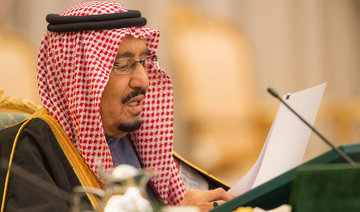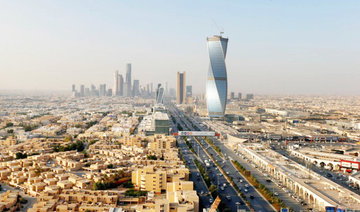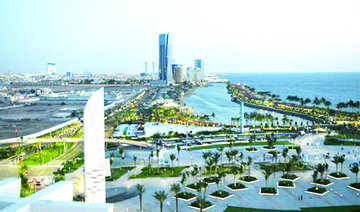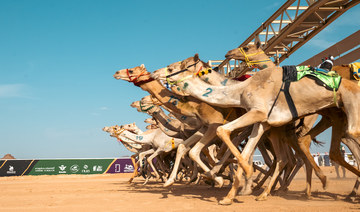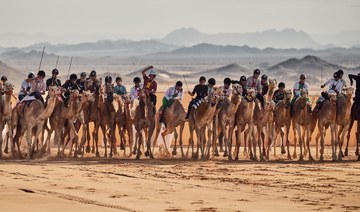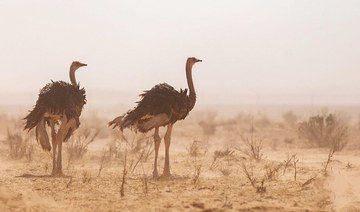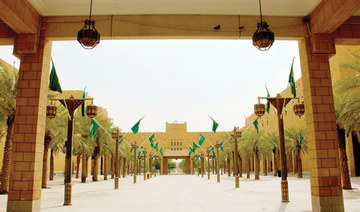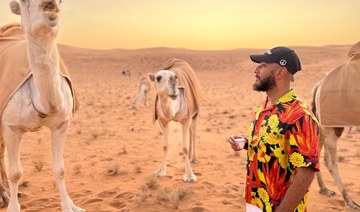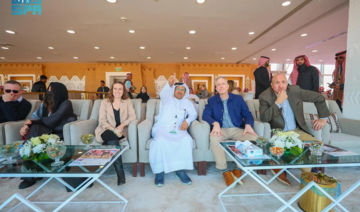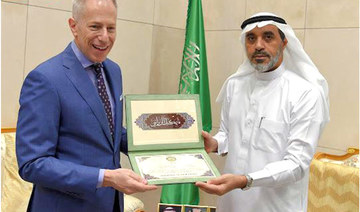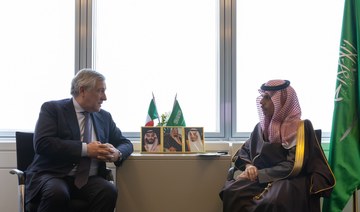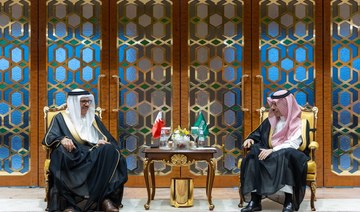DUBAI: Top economists have welcomed the expansionary departure from the tight fiscal control of the past three years reflected in this week’s Saudi budget.
But there was some debate as to the degree of stimulus that will be injected into the economy, the projections for the non-oil economy next year, as well as the possibility of further “austerity” measures in the years leading up to 2023 — when public finances are forecast to be balanced.
Khatija Haque, who leads research at the UAE’s Emirates NBD, said: “The authorities have presented the 2018 budget as an expansionary one that will boost growth in the non-oil sectors, create jobs and invest in the future productive capacity of the economy. The strategy is commendable.”
Jean Michel Saliba, MENA economist at Bank of America Merrill Lynch, said: “The 2018 budget walks a fine line. It is, on balance, expansionary as the austerity pace eases but reforms continue despite revised medium-targets.”
Jason Tuvey, Middle East economist with London consultancy Capital Economics, said: “The Saudi budget showed that the government has already started to loosen fiscal policy and will continue to do so in 2018.”
Ziad Daoud, chief Middle East economist at Bloomberg, said: “The Saudi budget marks a break with the earlier strategy of substantial deficit reduction. This is sensible and will help the economy grow somewhat faster next year.”
However, economists were surprised by the announcement of an extra SR135 billion of expenditure from the Public Investment Fund (PIF) and other government agencies, announced separately from the general budget statement — bringing the total public spend to SR1.1 trillion.
“It’s hard to know how to treat this and to make any comparison, because we do not know how much these agencies spent in 2017,” said Tuvey.
Haque said: “The PIF will set aside SR83 billion for mega infrastructure, real estate and transportation projects; this is likely to include funding for the new city, Neom, that was announced at the investment summit in November. National Development Fund investment of SR50 billion will be used for housing and other initiatives to stimulate private sector growth, create jobs and boost efficiency.”
There was a general consensus that the 2018 budget would help the economy to grow faster. “We now think growth will be closer to 1.5 percent in 2018, compared to our previous forecast of 0.8 percent,” said Tuvey.
The budget forecast growth of 2.7 percent for next year, driven by a leap in the non-oil sector, officially forecast to grow by 3.5 percent.
Haque said: “Given the higher-than- expected rise in public sector spending next year, we have revised our GDP (gross domestic product) growth forecast higher to 2.8 percent, with the increase coming entirely from non-oil sector expansion.”
Daoud said: “Bloomberg Economics has revised up the non-oil GDP forecast for 2018 to 2 percent from 0.7 percent as the amount of fiscal loosening is higher than what was previously penciled in. That’s motivated by the relationship between the non-oil fiscal stance and real non-oil growth.”
But Tuvey cautioned: “Non-oil growth of 3.5 percent would be close to boom times.”
The budget also confirmed that the target date for fiscal balance between revenue and expenditure would now be set for 2023, as the International Monetary Fund (IMF) recommended recently.
Haque said: “We have seen large budgets before. We would argue that the effectiveness of public sector spending is just as important as the sum of money that is disbursed, and improving this will require structural changes in the way ministries and funds are administered and controlled.”
Nasser Saidi, former economy minister of Lebanon and now an independent consultant, said: “Oil-dependent countries face a challenge when they have to undertake economic change. In Saudi Arabia, there is a very clear vision and strategy at the top.”
Saudi budget will boost growth in the non-oil sectors and create jobs, say economists
Saudi budget will boost growth in the non-oil sectors and create jobs, say economists
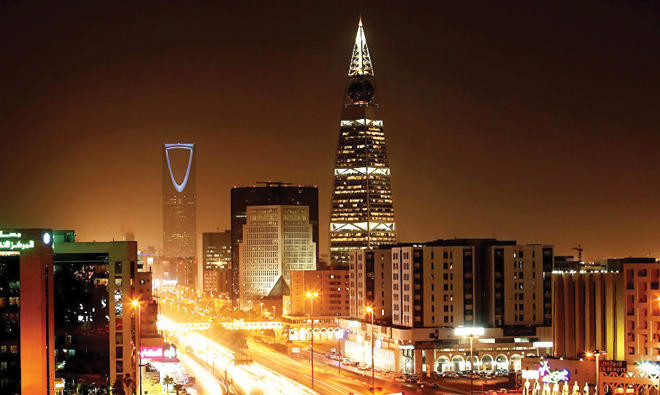
Meet Rima Al-Harbi, the first Saudi female to win at the AlUla Camel Cup
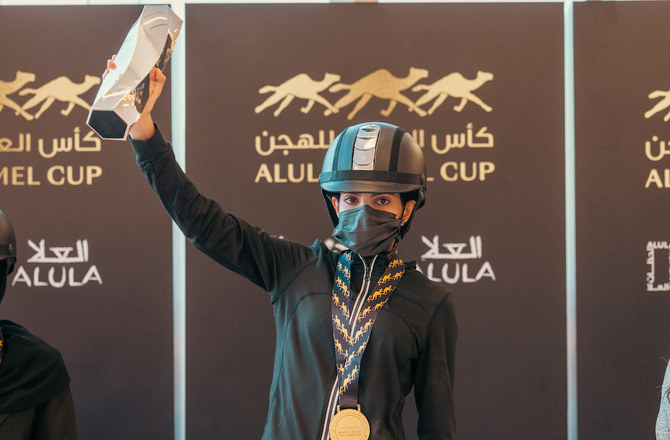
ALULA: “Our dream, as athletes, is to be able to represent our country; and for me to live my dream for my country — in my country — is the ultimate triumph,” Rima Al-Harbi told Arab News after making history this week as the first Saudi woman to win at the AlUla Camel Cup.
At last year’s inaugural competition, Al-Harbi was the only woman to compete in a field full of male riders. This year, the event included a women’s category. Al-Harbi returned. And this time she won.
“Most of the women I competed against this year have way more experience than me; it was truly a difficult race, in general,” Al-Harbi said. “But somehow, thanks to Allah, I didn’t feel like anyone challenged me. From the moment we started to when we reached the finish line, I was in first place.”
The 22-year-old, who was raised in nearby Madinah, where she still resides, grew up around camels. Both her father and grandfather competed in camel racing and she has a fierce love for the animal and for the sport. She credits her grandfather for encouraging her to learn how to ride when she was just seven years old. Now, she trains with her camel, Auf, for about two hours every day. She is continuing the family tradition and breaking records along the way.
Al-Harbi said that three of her sisters also ride camels, but “as a hobby.” She is the only one of her siblings to compete professionally.
Al-Harbi has opened a small training club for local women who want to try their hand at camel racing. Her aim is to strengthen the community and to find fellow Saudi women to join her journey.
“Since I have a deep love for the sport and have the opportunity and capability, why wouldn’t I want to help other women also get into the sport? These women want to try it as a hobby and we all have to start somewhere. I don’t take any funds for this; it is done out of pure passion. It is just about introducing the sport to women who are interested. I offer them guidance and advice, and we walk through the sport,” she said.
The four-day AlUla Camel Cup ends on Saturday. Al-Harbi did return the day after her victory to soak up the atmosphere and cheer on other riders, but don’t count on her being back for the final day.
“I will stay home to rest,” she told us with a laugh.
Endangered red-necked ostrich chicks born in royal reserve
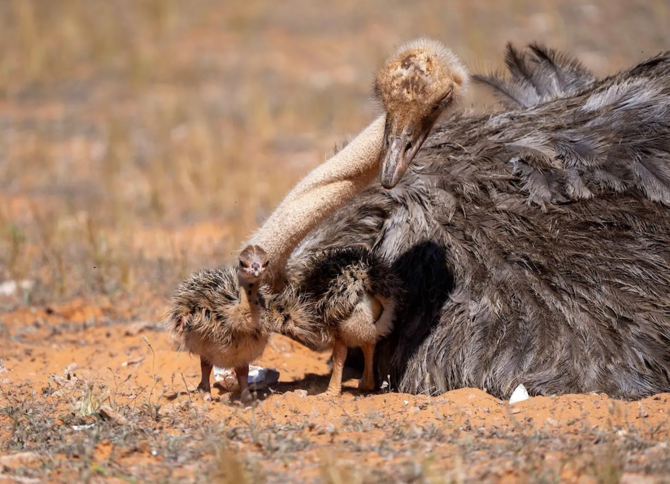
- Birds are part of resettlement program launched in 2021
- Sand gazelle, Arabian oryx among species being protected
RIYADH: The Imam Turki bin Abdullah Royal Nature Reserve Development Authority has announced the birth of three endangered red-necked ostrich chicks.
The birds have been considered extinct in the northern region of the Kingdom for a century and have now returned thanks to the efforts of the ITBA, the Saudi Press Agency reported on Friday.
The ITBA had initiated an ostrich-resettlement program in late 2021, aiming to establish a suitable natural habitat for a pair of the birds. This initiative bore fruit as the ostriches successfully adapted to the reserve’s environment, producing 12 eggs in the spring of 2024.
The ITBA has aimed to reintroduce rare species into their natural environments, as part of a broader commitment to wildlife development, biodiversity conservation, and environmental restoration.
Among the numerous rare creatures benefiting from these efforts are the sand gazelle and Arabian oryx.
The ITBA has 138 species in its care including Arabian wolf, various types of foxes, felines, hares, the Asian bustard among other birds, and reptiles.
The reserve covers an area of 91,000 sq. km in the northeastern part of the Kingdom. It is a popular destination for those interested in eco-tourism, bird watching and hiking.
The reserve also offers cultural experiences, allowing visitors to interact with the local Bedouin communities, learn about their traditional way of life, and enjoy authentic cuisine.
In February, the ITBA signed a memorandum of understanding with the King Abdulaziz Foundation for Research and Archives to document the heritage of the reserve.
The pact will ensure collaboration to conduct archaeological surveys and excavations, inventory inscriptions, document intangible heritage and social history, and identify grazing locations.
Saudi, UAE and Qatar secure wins on second day of AlUla Camel Cup
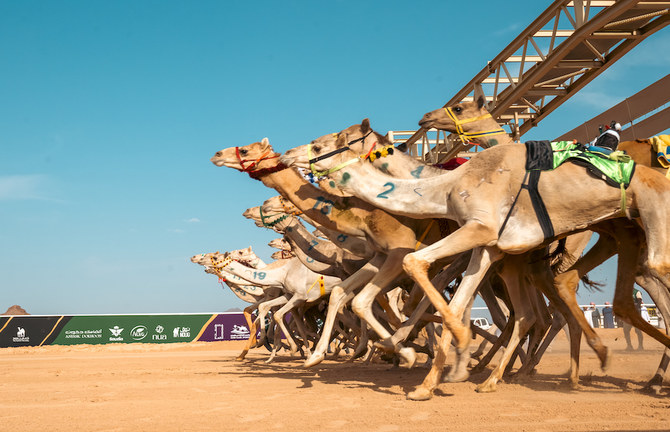
- Minister of Interior’s entry takes first race in the Hagayeg category
ALULA: Saudi Arabia, the UAE and Qatar provided the big winners on Day 2 of the second annual AlUla Camel Cup.
Held in unseasonably hot conditions, Thursday’s competition consisted of two 5 km categories, the Hagayeg and the Lagaya, with two races run in each.
Saudi Arabia’s Minister of Interior Prince Abdulaziz bin Saud bin Naif won the first Hagayeg race, much to the delight of spectators.
The Prince’s camel, aptly named AlUla, won in a time of 5 minutes 59.3 seconds. In the second Hagayeg race of the day, Shart, owned by Emirati Mohammed Al-Kutbi, took first place in a time of 5:57.8.
The day’s total prize pool of $6.83 million was split equally between the two categories.
Winners in each of the races received $870,000, second-place finishers earned $266,666, and those in third place received $133,333. The balance of the prize pool was distributed among the other finishers.
The event was organized by the Royal Commission for AlUla as part of the AlUla Moments calendar, in partnership with the Saudi Camel Racing Federation.
The 2024 AlUla Camel Cup offers spectators and participants a new and more expansive experience after the inaugural edition in March last year.
This year, designated Year of the Camel by the UN and the Ministry of Culture, the event pays homage to the desert animal that is so integral to the Kingdom’s heritage.
“The AlUla Camel Cup attracts the best riders and the best camels throughout not just the region, but the world,” said Mahmoud AlBalawi, executive director of the SCRF. “Qualification for the AlUla Camel Cup is deliberately challenging, with 11 camel races taking place under the federation’s jurisdiction throughout the season to qualify for this illustrious competition.”
AlBalawi said that the Saudi Camel Racing Federation’s programs “target all corners of Saudi Arabia in a bid to continue to grow and improve the cherished sport of camel racing. There are more than 50 camel racing tracks across the country, including the elite AlUla venue where the AlUla Camel Cup takes place.”
RCU’s chief sports officer, Ziad Al-Suhaibani, praised the participants and said: “The AlUla Camel Cup reflects the importance of camel racing as a symbol of the Kingdom’s heritage and culture.”
While the heritage sport dates from the seventh century, the event this year includes a more contemporary setup that caters to all the family. There are opportunities to take camel selfies, sample camel smoothies or listen to live folk music by local performers.
The final races take place on Saturday.
US Embassy marks 248th Independence Day with shared US-Saudi vision for space exploration
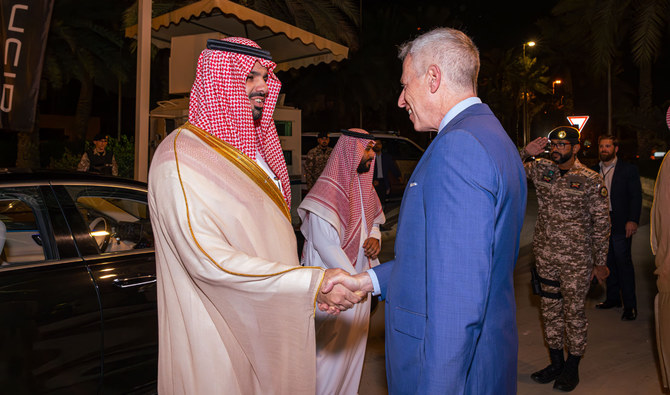
- Ambassador Michael Ratney welcomes hundreds of Saudi guests to space-themed Riyadh reception
RIYADH: The US Embassy in Riyadh celebrated the 248th anniversary of Independence Day on Thursday with a reception hosted by US Ambassador Michael Ratney.
The ambassador welcomed guest of honor Prince Faisal bin Abdulaziz bin Ayyaf, Riyadh Region mayor, along with Saudi officials, and hundreds of Saudi guests, as well as visitors from Washington, including members of the US Congress.
The space-themed Independence Day reception served as a symbolic celebration of the future of the US-Saudi cooperation in space, highlighting the profound benefits and possibilities of space exploration, research, and commercial development.
Ratney said the theme reflects the “shared ambition of the United States and Saudi Arabia to embrace opportunities in space, positioning both countries as pioneers in this frontier of innovation.”
The event evoked nostalgia for past achievements, such as the 1969 moon landing, while emphasizing ongoing advancements in space sciences, particularly commercial space exploration.
Ratney highlighted Saudi pioneers in space travel, such as Prince Sultan bin Salman, and astronauts Rayyanah Barnawi and Ali Al-Qarni.
An art installation, “Museum of the Moon,” by artist Luke Jerram, featured NASA’s high-definition imagery of the lunar surface.
According to the US Embassy’s statement, the collaboration between the US and Saudi Arabia continues to advance shared interests in diplomacy, commerce, culture, and more.
The US remains dedicated to enhancing shared US-Saudi shared interests in security and in fostering prosperity in the region, while also exploring new avenues for partnerships in areas such as the arts, education, entertainment, and tourism, it said.
Both countries are poised to explore further cooperation, including potential joint ventures in space, reflecting a vision for an even stronger US-Saudi relationship in the future, the statement added.
Saudi, Cypriot foreign ministers discuss relations
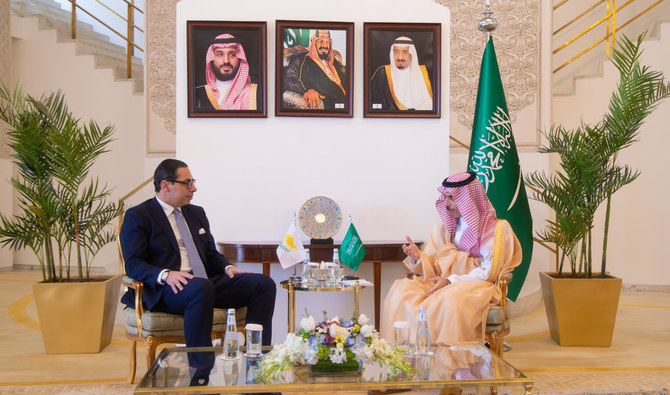
Saudi Minister of Foreign Affairs, Prince Faisal bin Farhan received his Cypriot counterpart, Dr. Konstantinos Kompos, at the ministry’s headquarters in Riyadh on Thursday.
During the meeting, the ministers reviewed the advanced bilateral relations between the Kingdom and the Republic of Cyprus, and ways to promote them in a variety of fields.
They also discussed ways to increase bilateral coordination on issues of common interest and reviewed international developments.


